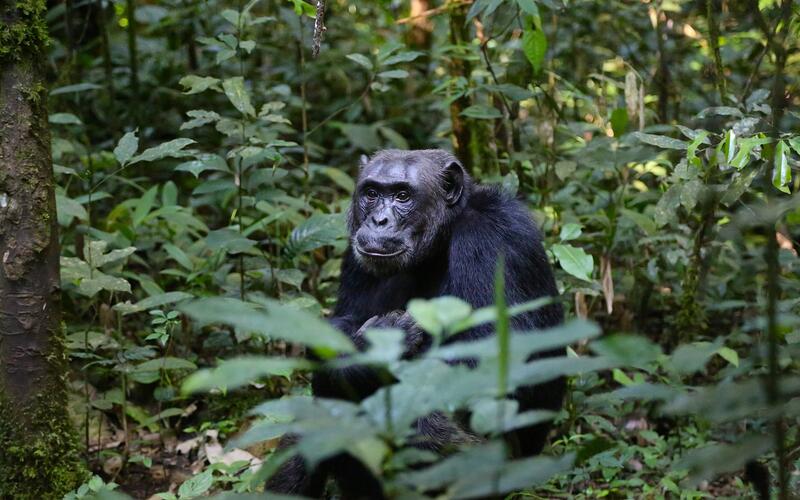Contact tracing wild chimpanzees: how social connectivity data may help save an endangered species

Contact tracing wild chimpanzees: how social connectivity data may help save an endangered species
The social interactions of male chimpanzees influence the spread of respiratory disease among them. This information may help conservationists manage outbreaks that threaten the viability of this endangered species.
Sandel, AA et al., “Social Network Predicts Exposure to Respiratory Infection in a Wild Chimpanzee Group” EcoHealth (2021) https://doi.org/10.1007/s10393-020-01507-7.
Although scientists have long understood how diseases might spread through animal populations in the wild, determining how and when a disease spreads between two specific animals is incredibly difficult. It requires long periods of close observation and the ability to accurately determine which animals are exhibiting clinical symptoms at a given time. This information may now be critical for protecting chimpanzees. They are an endangered species at risk of diseases that could decimate their population, including human-transmitted COVID-19.
In a behavioral study published by EcoHealth in early 2021, Dr. Aaron Sandel and colleagues at Kibale National Park in Uganda revealed how they tracked a respiratory disease outbreak in a wild chimpanzee population in 2015. Male chimpanzees follow a complex social structure in which they compete for dominance and territory by forming alliances. Sandel’s team observed 40 male chimpanzees for three months, noting which individuals interacted with each other and how often. This chimpanzee contact tracing allowed the researchers to map out a contact network of all the male relationships in their study population. Doing so helped shed light on how a male chimp’s choice of social partners may predict his likelihood of displaying signs of respiratory infection.
Contact networks are visual webs of chimpanzee social circles that reveal which individuals are central contacts to the larger population and which are more isolated on the fringe of the group. Sandel’s team combined this data with observations of when certain chimpanzees showed symptoms of respiratory infection, like coughs or a runny nose. Their analysis then revealed how the disease likely spread from chimp to chimp across the social network.
The males closer to the center of the network – those with the most social contacts – were more likely to exhibit signs of respiratory infection than those with fewer and weaker relationships. The contact tracing data also revealed a timeline of the disease outbreak in which certain clusters of chimpanzees that interacted closely became infected first before infections spread to other groups. Both the likelihood and timing of respiratory infections may therefore be influenced by the social status of individual chimpanzees.
Like humans, chimpanzees are highly social primates that cooperate and bond with each other to obtain benefits like friendship and shared food. But it is clear that our common social nature may have evolved with some negative consequences, including the potential for contagious disease outbreaks. Because of our close genetic similarity, chimpanzees, gorillas, orangutans, and bonobos are all at serious risk of human-transmitted diseases like COVID-19 and Ebola. All of these species are classified as Endangered or Critically Endangered by the IUCN Red List and could be one outbreak away from the brink of extinction. The work of Sandel and colleagues shows that combining infection data with social networks can be a useful tool for researchers and conservationists to manage endangered primate populations. Moreover, it may provide the information necessary to care for animals at risk of disease before it is too late.




